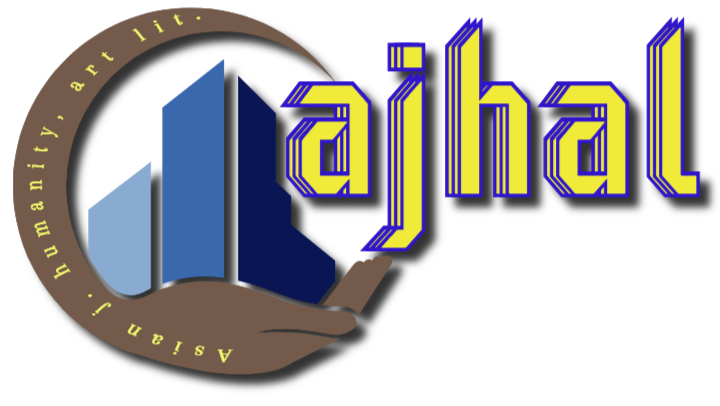Universe in Movement
DOI:
https://doi.org/10.18034/ajhal.v3i2.311Keywords:
complexity, universe, poetry, image, concept, space, timeAbstract
In this paper, we analyze some aspects of the posthumous work of American writer Edgar Alan Poe, titled Eureka. A prose poem, published in 1848. This is a controversial book for several reasons, among others, by the complexity of its artistic characterization, depth of and cognitive influences and impact of its nutrients for the world of science, especially physics and astronomy. First, we proceed to do a panoramic review of the contributions of the writer outside the United States, and it is explained the interest in his vast literary production in France and in the Spanish-speaking world. They are then analyzed the links that Eureka may have with the literary career of Poe and other fields of culture, art and science that are related precisely with philosophy, aesthetics and above all, the Astronomy of his time. Finally, it is considered and weighted the prospective dimension of the work under study, trying to clarify to what extent Eureka is ahead of the universe conception that we have today and what effect it may have had on the contemporary scientific and technological change.
Downloads
References
Abrams, Meyer, H. (1971), The Mirror and the Lamp: Romantic Theory and the Critical Tradition, Oxford University Press, USA, c1953.
Cantalupo, Barbara (1990), “‘Of or Pertaining to a Higher Power’: Involution in Eureka,” American Transcendental Quarterly, Vol. 4, N° 2 (June, 1990), p. 87.
Einstein, Albert (1985), Sobre la teoría de la relatividad y otras aportaciones científicas, (tr. José M. Álvarez Flores y Ana Goldar), Sarpe, Madrid.
EsplinEmron (2011),”Cosmopolitan Poe: AnIntroduction”, en TheComparatist, Vol. 35, 2011, University of North Carolina Press, pp.198-210.
Fugate, Courtney (2012), “The German Cosmological Tradition and Poe’s Eureka”, in Edgar Allan Poe Review, Vol.13, N° 2, Fall 2012, Penn State University Press, pp.109-134
Kierkegaard, Søren (1987a),Either/Or, Vol. I, ed. and trans. H. V. Hong and E. H. Hong, Princeton: Princeton University Press.
Kierkegaard, Søren(1987b),Either/Or, Vol. II, ed. and trans. H. V. Hong and E. H. Hong, Princeton: Princeton University Press.
Lee, Maurice, S. (2009), “Probably Poe”, en American Literature, Vol.81, N° 2, June 2009, Duke University Press, pp. 225-252. DOI: https://doi.org/10.1215/00029831-2009-001
Misner, Charles W., Thorne Kip.S. & Wheeler John A. (1973), Gravitation, W.H.Freeman& Co., New York, NY, c1970.
Ortega-Villaseñor, H (2003), “Andamiaje teórico para el estudio de la creatividad: el pensamiento popperiano en el arte y la ciencia”, en Alpha: revista de artes, letras y filosofía, Vol. 19, pp. 235-250.
Peebles, Scott (2004),The Afterlife of Edgar Allan Poe, Rochester, N.Y.: Camden House. 2004.
Penón, José Luis (2013), “Ecos de Eureka, de Edgar Allan Poe en la literatura española de principios del S. XX”, Journal of the College of Arts, Celtic Studies and Social Sciences, University College Dublin, Aigne, pp. 30-62.
Poe, Edgar A. (1848), Eureka: A Prose Poem, George P. Putman, New York, NY), c1848, 143 pp. La versión original puede consultarse también en línea (Project GutembergLicense): http://www.gutenberg.org/files/32037/32037-h/32037-h.htm. (Consulta de noviembre 15, 2013).
Poe, Edgar A. (1972), Eureka, (tr. Julio Cortázar, Alianza Editorial, Madrid), c1956, 129 pp.
Rachman, Stephen (2014), “Poe, the Arabesque, and Cosmology”,Edgar Allan Poe Review; Vol. 15, Issue 1, pp. 1-19,. DOI: https://doi.org/10.5325/edgallpoerev.15.1.0001
Rindler, Wolfgang (2001), Relativity. Special, General and Cosmological, New York, Oxford University Press,
Rojo, Alberto, G. (2010), Café científico, Pensar la ciencia entre todos (ciclo 2011), Programa de Divulgación Científica de SECYT, de la Universidad Nacional de Córdoba. Disponible en línea:http://www.secyt.unc.edu.ar/cafecientifico/index.php?sec=201105cienciayarte&col=1&ciclo=2011
Rojo, Alberto, G. (2010), La física en la vida cotidiana, Siglo Veintiuno editores, Buenos Aires, c2007.
Rojo, Alberto, G. “Literatura y Ciencia. Cuatro Ejemplos de una Curiosa Intersección” (2001). Disponible en línea: http://www.albertorojo.com/lyc/ . (Consulta de noviembre 15, 2013).
Stoltzfus, Ben (2012), “Magritte’s Literary Affinities: Baudelaire and Poe”, enIntertexts, Vol.16, N°2, Fall 2012, Texas Tech University Press, pp. 29-53. DOI: https://doi.org/10.1353/itx.2012.0014
Vincelette, Elizabeth (2008), “Beauty, Truth and the Word: The Prophecy and Theology of Poe’s Eureka”, en The Edgar Allan Poe Review, Vol. 9, No. 2 (Fall 2008), pp. 36-54, Published by: Penn State University Press, pp. 36-54.
--0--















